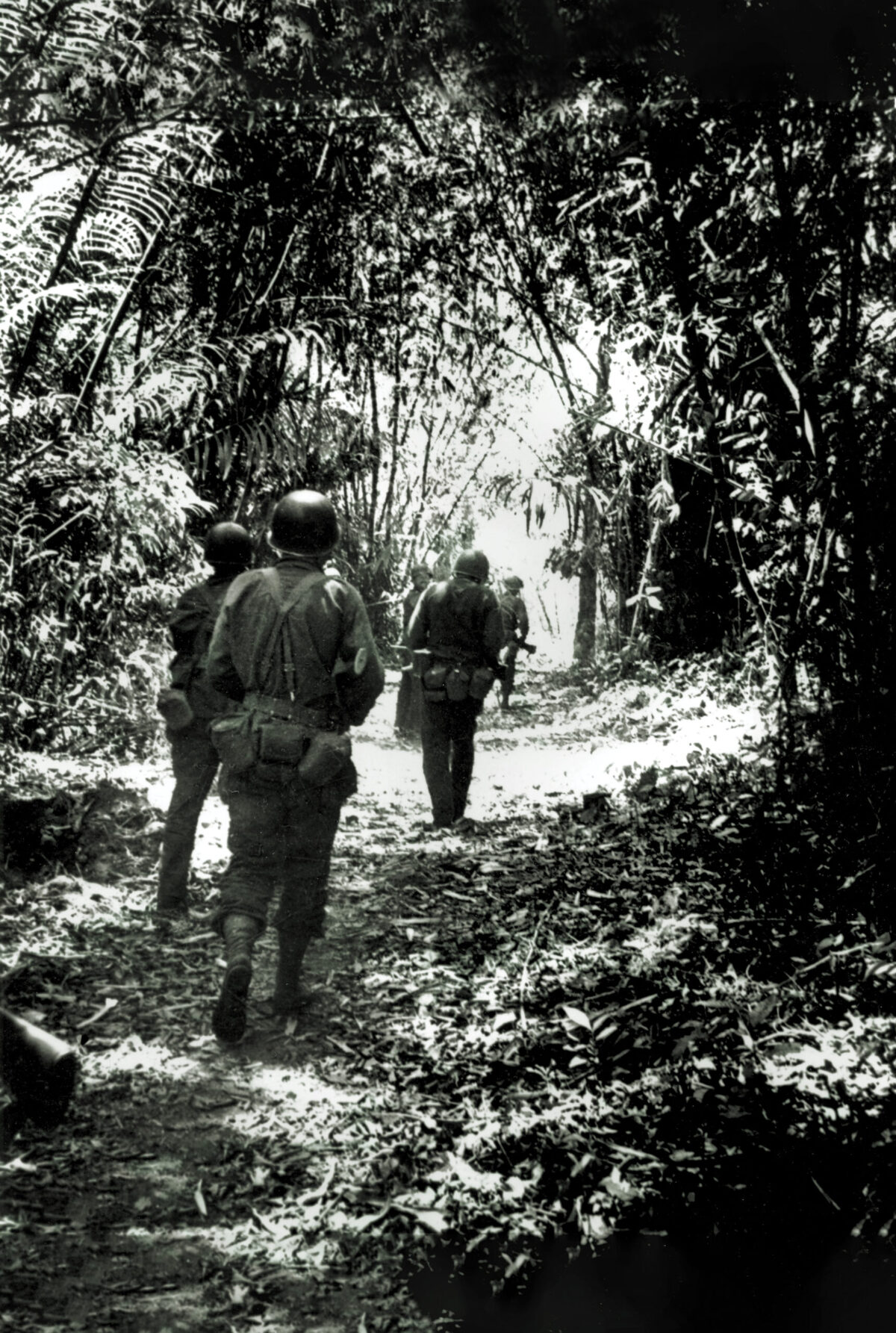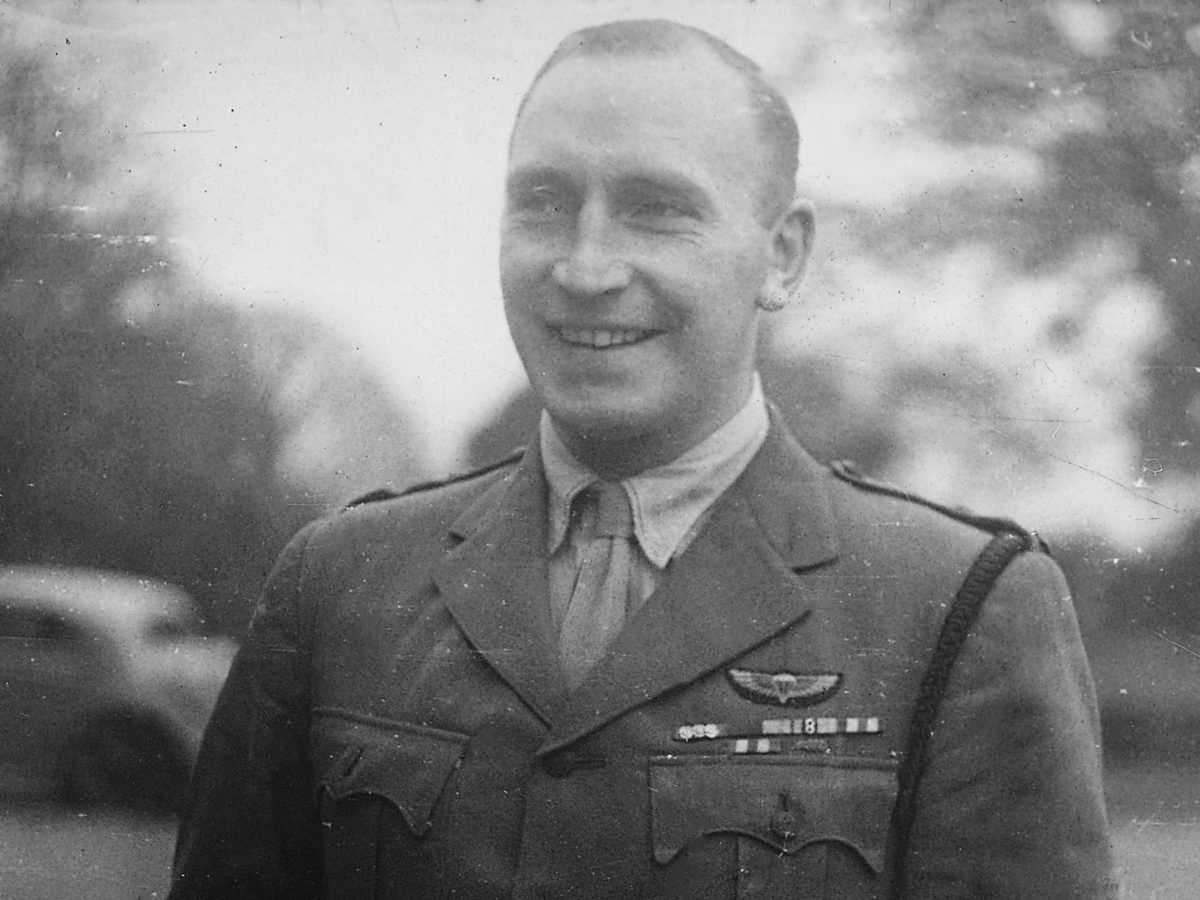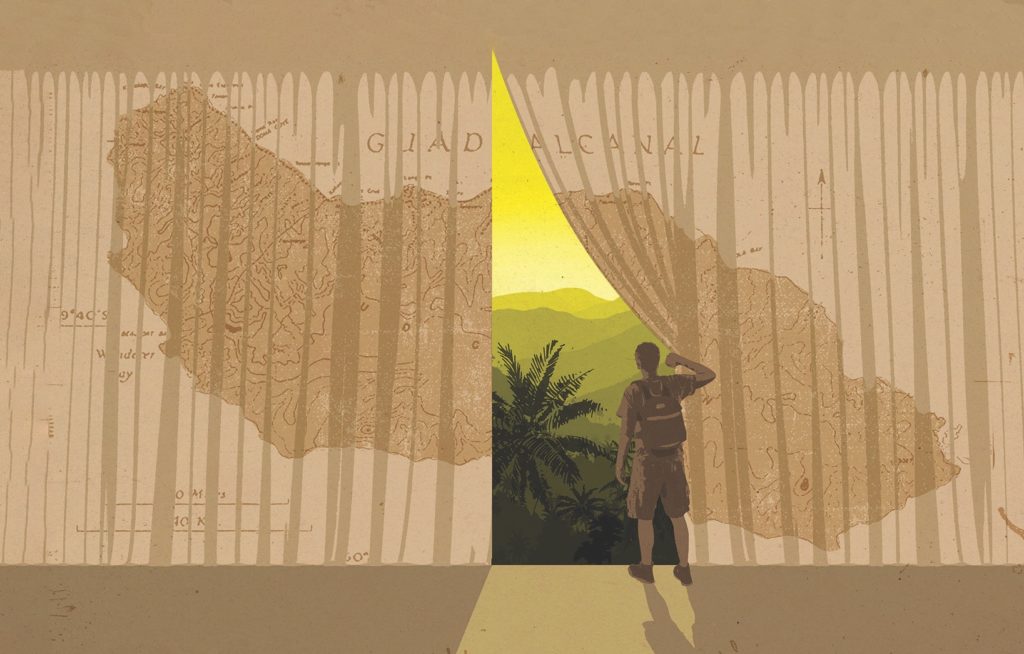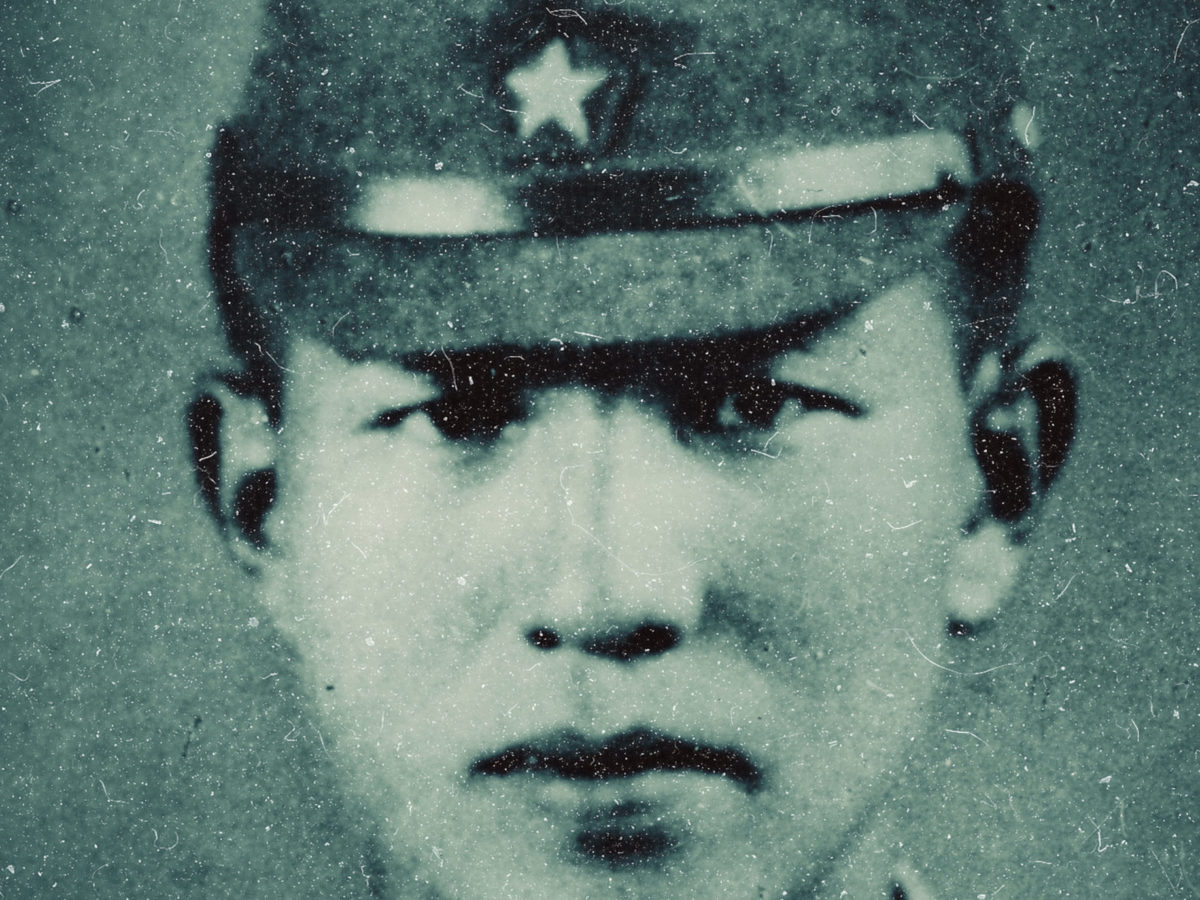When British Prime Minister Winston Churchill arrived at the Quebec Conference (code-name QUADRANT) in August 1943, he had a special guest with him. He was a small intense, rather odd-looking man, as Gen. Henry H. “Hap” Arnold, commander of the United States Army Air Forces, recalled: “You took one look at that face, like the face of a pale Indian chieftain, topping the uniform still smelling of jungle and sweat and war and you thought ‘Hell, this man is serious’.”
Brig. Orde Wingate had spent the first two months of 1943 in the Burma jungle, leading a guerrilla campaign against the Japanese that achieved little in terms of material damage: a few bridges blown, some railway lines cut and a few dozen enemy soldiers killed. The real significance of what Wingate and his 3,000 Chindits had achieved was psychological: they had attacked the vaunted Japanese army in its own territory.
The exploits of the British Special Forces unit were splashed across American newspapers, with the Ogden Standard-Examiner calling it “one of the greatest epics of the war” and the Waterloo Daily Courier hailing Wingate for his innovation in using aircraft for resupply. “Cuttingan army off from its base and penetrating deep into enemy territory is an exceedingly dangerous maneuver,” said the paper. “But the ability to summon supplies by radio and receive them from the air makes such a maneuver more feasible. It may be that the Wingate expedition in Burma is only the forerunner of a new kind of warfare.”
Going Behind Enemy Lines
Churchill took the 40-year-old Wingate to the Quebec Conference for exactly that reason: to show to his American allies that a new kind of warfare had been launched in Burma, what Wingate called “Long Range Penetration.” The brigadier addressed the American delegation on Aug. 17, and told them in his conclusion that “long range groups should be used as an essential part of the plan of conquest to create a situation leading to the advance of our main forces.”
The next day Wingate had an audience with Churchill and President Franklin D. Roosevelt. FDR was so impressed that he authorized the deployment of American ground troops in Burma for the first time.
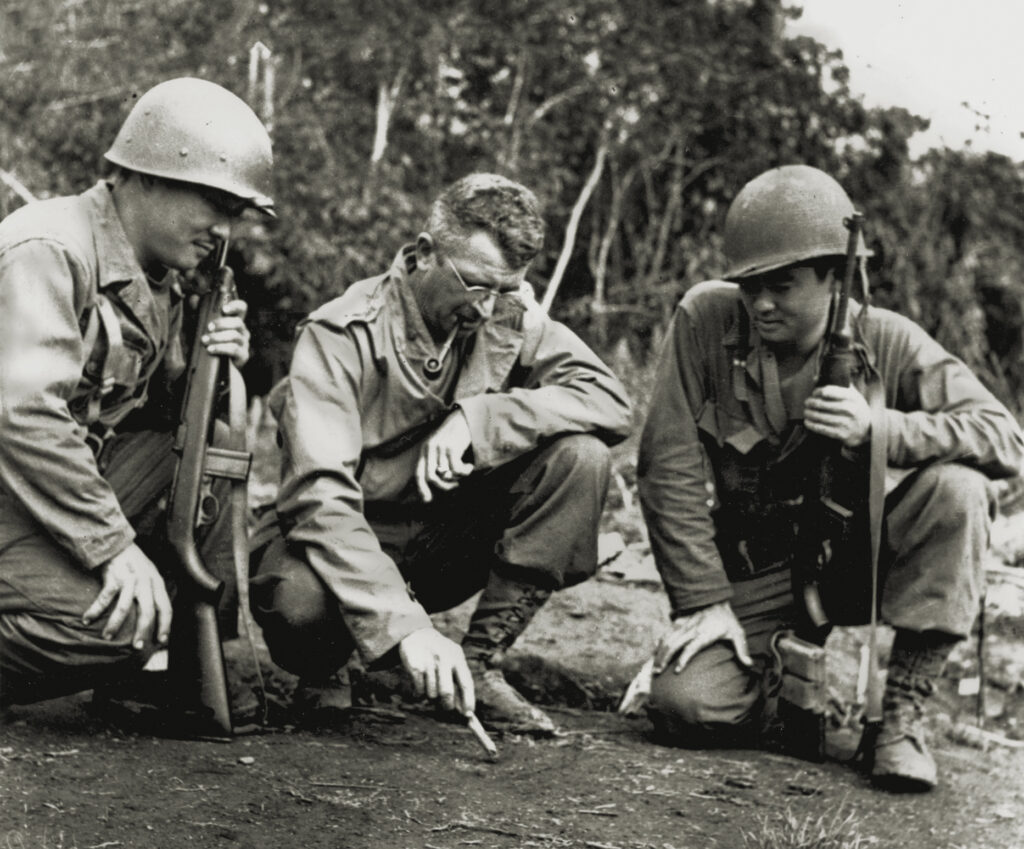
The official telegram of authorization from Washington was sent Aug. 31 to Lt. Gen. Joseph Stilwell. In February 1942 Stilwell had been posted to Burma as head of a small U.S. military mission to help train the Chinese army. It had not gone well. Stilwell and his men had been forced to flee the advancing Japanese on foot, trekking 140 miles north to India. In 1943 he was back in the China Burma India Theater, in charge of Northern Combat Area Command. Stilwell’s instructions were to recruit a total of 2,830 officers and men, all of whom had to be volunteers and “of a high state of physical ruggedness.” The force—codenamed “Galahad”—needed to be ready for combat deployment in February 1944: “Only 3,000, but the entering wedge,” Stilwell wrote in his diary on September 2. “Can we use them! And how!” Stilwell’s triumphalism was short-lived. On learning that Galahad would be under the command of Wingate–a man he considered (as others did), “an exhibitionist”—he raged: “That is enough to discourage Christ.”
On New Year’s Day 1944 General Order Number One redesignated Galahad the 5307th Composite Regiment (Provisional). As one of their officers quipped: “Where’d they ever get such a number? It sounds like a street address in Los Angeles.” That wasn’t the only change afoot.
Working with Chinese Allies
Recommended for you
The 3,000 Americans had arrived in India by troopship from San Francisco at the end of October 1943. They established a base at Camp Deogarh and that autumn they had been driven hard by their two commanding officers, Lt-Cols. Francis Brink and Charles N. Hunter. They had also benefited from instruction from Wingate’s Chindits, who were camped nearby and training for a second operation behind the lines in Burma.
“The Chindits were really tough guys, they put us through our paces,” recalled Bernard Martin, one of the American volunteers. “We went on these long marches with 50lbs on our back, and sometimes in the middle of the night they would start firing their weapons shouting ‘we’re the enemy, we’re the enemy!’. We had to react. They taught us well.”
Stilwell meanwhile was preoccupied with planning an offensive against the Japanese in Burma. On Dec. 18 Chiang Kai‐shek, China’s Generalissimo, agreed to allow him to command the 22nd and 38th Chinese divisions in the imminent invasion, the first time an American would lead Chinese soldiers into battle.
It was a three-pronged invasion. The Chinese Y [Yoke] Force would push into north-east Burma, and the British IV Corps would attack from the West across the Chindwin River. The third thrust would come from Stilwell’s two Chinese divisions, attacking down the middle. Stilwell’s force would be up against the elite Japanese 18th Division under the command of Lt. Gen. Shinichi Tanaka.
The offensive was launched on Dec. 24, 1943. The fighting was intense. In the first week Stilwell’s two Chinese Divisions lost 750 men killed or wounded, but they pushed back the Japanese. Emboldened by his initial gains, Stilwell demanded of Adm. Lord Louis Mountbatten, Supreme Allied Commander South East Asia Command, that the 3,000 Americans of Galahad be placed under his direct command. Mountbatten gave Stilwell his wish at the Delhi Conference on Dec. 31.
New Leaders
Stilwell wasted no time in stamping his mark on his new force. As well as changing its name, he also changed its command, dismissing Brink and demoting Hunter to the second-in-command. The new C.O was announced on Jan. 4: 40-year-old Brig. Gen. Frank Merrill. It was a contentious decision, not least because Merrill was not physically robust, and Stilwell knew it. Merrill had been part of his military mission to Burma in 1942 and had collapsed with heart trouble during the retreat to India. Hunter was a combat soldier and his own man; Merrill was neither. What he was, however, was a yes-man, which was why Stilwell wanted him in command of the 5307th.
The news of Hunter’s demotion disappointed the men. “It had been our hope all along that Hunter would be the man who would be anointed to command us and carry us into combat,” reflected Lt. Sam Wilson, at 20 the youngest of the 5307th’s officers. “He put the unit together, trained the unit, got us into fighting fettle, and then we became a political football between the British…and Stilwell.”
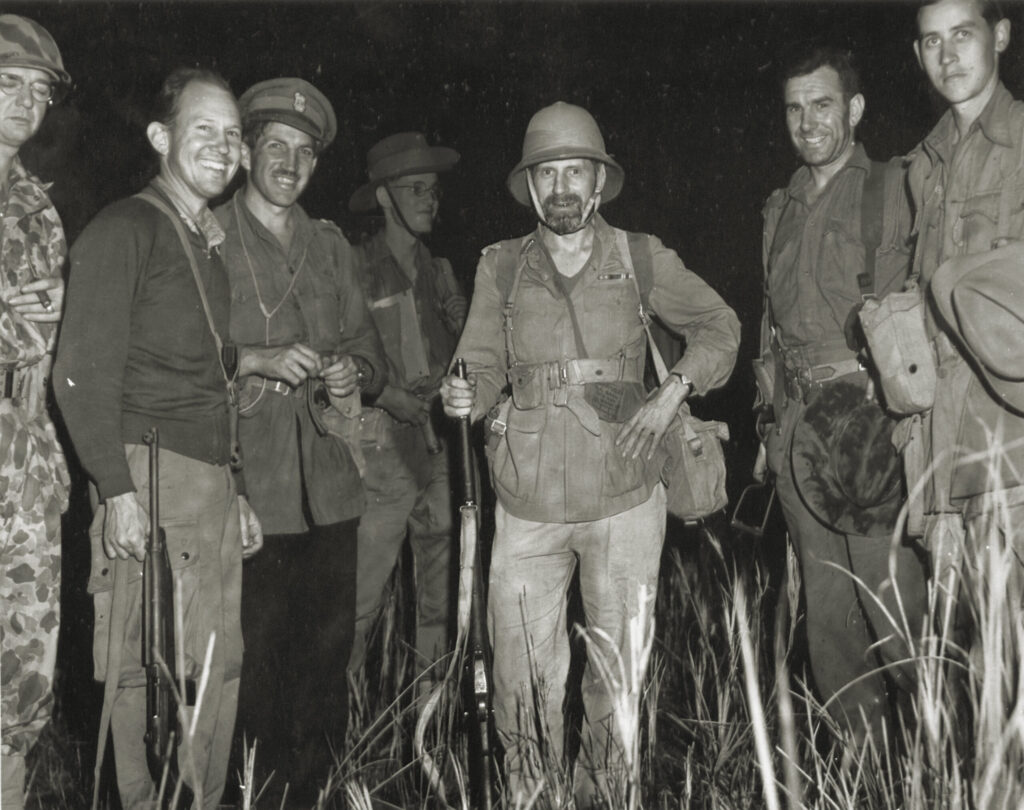
Hunter and Merrill had graduated from the U.S. Military Academy at West Point, N.Y. in 1929; that was about all they had in common. Hunter, born in Oneida, New York, in 1906, was a sinewy man with a temperament to match his tough physique. A contemporary described him as: “Very muscular with no excess fat. His athletic appearance and firm facial features created an aura of authority.” Hunter joined an infantry regiment on leaving West Point and served three years in the Philippines and two and a half in Panama, two postings where he gained valuable jungle training. In 1942 he was appointed Chief of the Rifles and Weapons Platoon Group of the Weapons Sections at Fort Benning, a frustrating role for a man who craved a combat posting. Hunter’s opportunity came with the formation of Galahad. “I had been selected from all other volunteer lieutenant colonels because of my extensive tropical jungle experience,” he recalled.
Merrill, in contrast, was a frail child who grew into a frail young man. He was accepted into West Point on the sixth attempt after the Academy finally agreed to overlook his poor eyesight. His peers at West Point nicknamed him “Pee-Wee” and mocked him in his yearbook entry. “We refuse to make predictions as to Pee-Wee’s future, for it is ever changing,” it ran. “First of all, his goal was to be a lawyer, then a politician, and last a soldier. Even this is slightly uncertain.” Merrill was never cut out to be a combat soldier. He graduated from the Massachusetts Institute of Technology in 1932 with a Bachelor of Science in military engineering and in 1938 he was sent to Tokyo as the Military Attaché. He then joined Gen. Douglas MacArthur’s staff in the Philippines and was appointed to a similar role under Stilwell when he arrived in Burma in March 1942.
But what Merrill lacked in physical strength he made up for in mental agility. Lt. Sam Wilson regarded his new C.O as “brilliant, innovative and probably a better strategic thinker than Hunter.”
Birth of the “Marauder” legend
On Jan. 20, 1944 a posse of American war correspondents were invited to watch the 5307th undergo some training exercises at their Deogarh camp. Frank Hewlett of United Press described them as “the roughest, toughest bunch of infantrymen the U. S. army has ever put together.” His colleague from Life magazine, James Shepley, was just as taken. There was a hitch, however, and that was the name. The 5307th didn’t exactly roll off the tongue. As Merrill gave the correspondents a lift in his jeep to the Betwa River to see how mules carried their supplies across water, Shepley had an idea: why not call the unit “Merrill’s Marauders”?
A week later the Marauders had been reduced through the rigors of training to a strength of 2,600 and began the 1200 mile move east to Assam, in northeast India just across the border with Burma. Eight hundred tons of supplies had already made the journey, including radio equipment, medical supplies, crew-served weapons and 400 mules. These animals were a recommendation from the Chindits, who had found them tough and hardy on their first operation in Burma. Capable of carrying 200 lbs of equipment each, the mules’ biggest advantage over horses was that they ate the bamboo leaves in Burma whereas a horse required a larger amount of daily fodder. A few Marauders had been given a crash course in how to handle the animal from “Mule-skinners” of the 31st QM Pack Troop.
The Marauders didn’t linger long in Assam. Late in the evening of Feb. 7 the 1st Battalion was the first of the three Marauder battalions to hit the trail toward Burma. The men were wearing a dark green cotton herringbone twill uniform and either calf-high rubber-soled canvas boots or standard combat shoes for footwear, some with and others without canvas gaiters. Their backpacks contained essential equipment such as mess gear, blanket, poncho, spare socks and boxed, dried food combat rations.
In the vanguard of the 1st Battalion column was Lt. Sam Wilson’s Intelligence & Reconnaissance platoon (I&R). Each battalion had an I&R platoon, whose job it was to blaze a trail, reconnoitering the dense jungle for the signs of the enemy and also for good bivouac sites and suitable areas for air drops. The men chosen for these platoons had to have initiative, endurance and awareness. Few Marauders possessed these qualities in more abundance than a 25-year-old sergeant from California called Clarence Branscomb, a veteran of the Guadalcanal campaign. Over the course of 11 brutal days in January 1943 the 6 ft Branscomb had shown himself a superb exponent of jungle warfare. “I enjoyed fighting,” he reflected.
Marching Into Burma
The Marauders marched across the Indian border into Burma and bivouacked at Shingbiyang on Feb. 18, enjoying what would be their last proper hot meal for months. Fifteen miles southeast was Stilwell’s HQ at Ningam Sakan, and it was there that Merrill received his orders for the forthcoming operation.
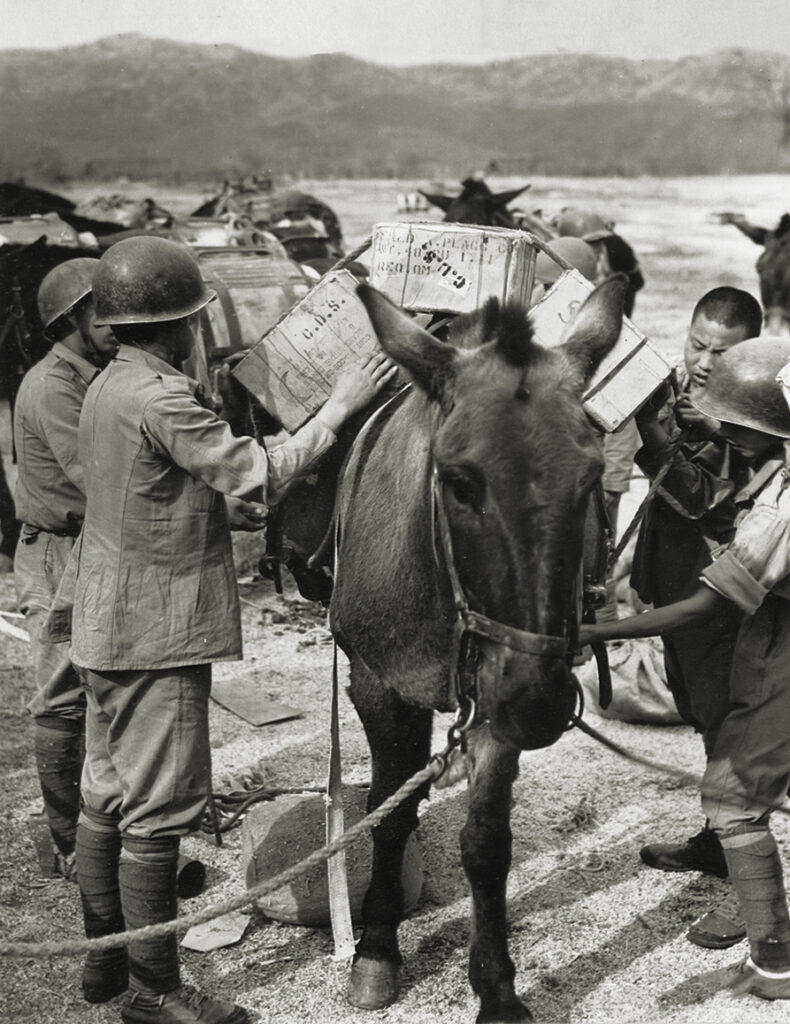
The Chinese 22nd and 38th divisions were slowly but steadily pushing the Japanese back from the Hukawng Valley. A pivotal role was being played by the Chinese 1st Provisional Tank Group under the command of Col. Rothwell H. Brown. They were driving south along the Kamaing Road toward Maingkwan, the main Japanese base in the valley. In front of a map at his HQ, Stilwell pointed to the village of Walawbum, 15 miles south of Maingkwan, and told Merrill this would be the site of their attack. The Chinese would launch a frontal assault on Walawbum, while the Marauders would cut their way through the jungle, and hit the enemy on their eastern (right) flank. Before setting off, the Marauders received a resupply by air. The C-47 transport aircraft of the First and Second Carrier Units dropped containers from a height of 400ft or less which were suspended from color-coded parachutes: blue for ammunition, white for rations, and green for medical supplies.
The honor of leading the Marauders as they deployed fell once more to Wilson’s 1st Battalion I&R platoon, which headed south on the morning of Feb. 24 to reconnoiter the villages to the east. The I&R platoons of the 2nd and 3rd Battalions, under the command of Lts. William Grissom and Logan Weston, set out a few hours later on the same trail before turning south and seeking out the enemy’s flank.
A Savage Environment
The terrain in northern Burma was savage: hills carpeted in forest and jungle, and rivers that were wide and powerful. The nights could be cold, giving way to a dawn mist and then intense heat as the sun climbed. The ground was thick with rotting vegetation and the air was damp and humid. The environment was a breeding ground for disease and abundant in menacing wildlife such as tigers, snakes and the creature the Marauders would come to hate most of all: the leech. Leeches, remembered Capt. Fred Lyons, were these “horrifying grayish-brown parasites that bury their heads in your veins and suck till they are bloated several times larger than normal size with your blood.” They were about an inch in length and would suck the blood from victims until dropping off on their own accord. They got everywhere: ears, noses and even testicles.
For Wilson and most men in his I&R platoon, Burma was an overwhelming sensory overload. They had never encountered such an inhospitable environment, nor had they ever met the enemy face to face. Wilson did not have the arrogance of youth, however, and readily tapped into the experience of his veteran sergeant Clarence Branscomb, who told him the average Japanese soldier was “tough, capable and skillful.”
Wilson didn’t have long to wait for his introduction to the enemy. “We were moving along a trail parallel to a river when we came to a kind of open glade,” he recalled. “I saw some horses by the river so I walked toward them. About halfway across the Japanese hiding along the river bank opened up on me. Shot my canteen off my belt and riddled my pack. I fell to the ground stunned.” Wilson recovered his senses and saw a Japanese mount one of the horses. “I opened my full-bore carbine on him and hit him with the first round but kept pumping rounds into him as he was sliding off the horse. Then a grenade came sailing through the air.”
Wilson flicked away the grenade. It exploded in the long grass but the force of the blast knocked him cold for a few seconds. He regained consciousness and saw a Japanese “running at me with his bayonet.” Wilson raised his weapon, squeezed the trigger and heard the click of an empty magazine. “Back to my left rear, maybe 30 or 40 yards away, Sgt. Clarence Branscomb stood up and hit the charging [Japanese] in the chest with three quick rounds,” remembered Wilson. “He practically fell on top of me.”
Race To The River
The Marauders met the Japanese in force for the first time on March 4. The previous evening Lt. Logan Weston had led the 3rd Battalion’s I&R platoon across the Numpyek river with orders from Lt-Col. Charles Beach, the battalion commander, to protect their north flank as they advanced toward Walawbum. Weston and his men were now effectively isolated from the rest of the 3rd battalion deep inside Japanese territory, and the enemy was aware of their presence.
Gen. Tanaka, commander of the 18th Division, ordered the bulk of the 55th and 56th Infantry regiments to move south and “destroy” the Americans threatening their flank. At daylight on March 4 the Japanese approached Weston’s platoon bivouacked close to a swamp. Weston let them advance and then gave the order to fire. “The enemy soldiers hit the ground and fanned out, crawling closer and shooting ferociously,” said Weston. “They chattered among themselves, some seemed to be giving orders.”
Weston called over his Nisei (a Japanese word meaning Second Generation American) interpreter, 23-year-old Henry Gosho from Seattle, one of 14 Japanese-Americans who had volunteered for the Marauders. In between the mortar shells and small arms fire, Gosho heard the orders shouted by the Japanese officer and translated them for Weston. They were attempting to encircle the Americans. Forewarned, Weston began withdrawing his platoon across the Numpyek but not before his radioman had sent a message to the 3rd battalion dug in on the other side of the river, requesting suppressing mortar fire.
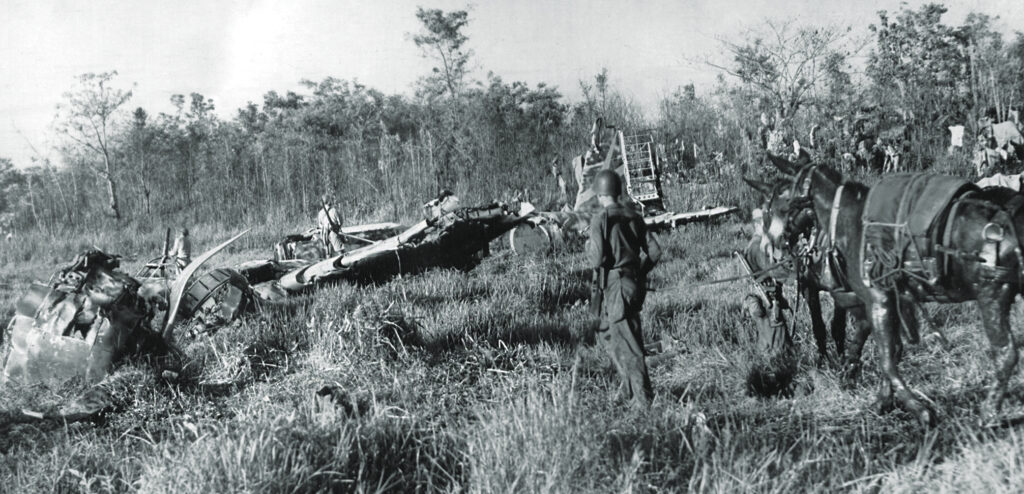
It was now a race to get over the river. The Americans jumped into the water and began wading across, urged on by Weston who stood in the middle of the Numpyek counting his men as they passed. Two had been badly wounded and were being carried on litters constructed from combat jackets and bamboo poles. It took time to get them into the water. The shrieks of the pursuing Japanese got closer. Then a 3rd Battalion platoon under the command of Lt. Victor Weingartner appeared on the far bank and opened fire. PFC Norman Janis, an Oglala Sioux and one of the sharpest shots in the outfit, spotted a Japanese crew setting up a Nambu Type 92 7.7mm machine gun. Janis raised his M1 Garand rifle. “He squatted down behind the gun so I shot for his head,” remembered Janis, who did not miss. “Another one got in his place, I hit him, got him out of the road.” Seven Japanese soldiers tried to pull the the Nambu’s trigger, but Janis killed them all.
Weston and his men got safely across to the eastern bank but the Japanese would not give up the chase. “They just kept coming across and we kept shooting at them,” said Weingartner.
The Japanese launched a fresh assault across the Numpyek early on March 6. It was repulsed with more heavy losses for the attackers; they came again in the afternoon with the same result. “I respected the Japanese very much, or the soldiers I did,” reflected Bernard Martin, a radioman with the 3rd Battalion. “They weren’t afraid. But they had poor commanders. The Japanese always launched frontal attacks. On several occasions they could have outflanked us but their commanders were stupid. On this occasion this officer appeared in shiny boots and pressed pants, waving his sword, and leading a charge across the river.”
“We’re The Marauders!”
The officer was killed along with an estimated 800 of his men in the two days of contacts with the Marauders. American casualties amounted to eight dead and 37 wounded. “Gen. Stilwell has sent a message that he is pleased,” Merrill informed his senior officers at a staff conference on the evening of March 7. “Between us and the Chinese, we have forced the Japanese to withdraw farther in the last three days than they have in the last three months of fighting.”
It was during the fight at the Numpyek River, recalled Martin, that the “Merrill’s Marauders” moniker was adopted by the men. “It was Lt. Col. Beach who told us that the newspapers were calling us Merrill’s Marauders,” he said. “We liked that name…when we were screaming abuse at the [Japanese] across the river we started yelling, ‘We’re the Marauders”.’
The man himself, Merrill, was beginning to feel the strain. He had been lightly admonished by Stilwell for not exploiting the casualties inflicting on the Japanese by the 3rd battalion and allowing them to withdraw south.
The Chinese pursued the Japanese into the Mogaung Valley down the main trail while the Marauders swung east through the jungle to attack them in the rear. Hunter led a mixed force of the 2nd and 3rd battalions to block the enemy retreat when the Chinese launched their assault. They clashed with the Japanese at first light on March 24 between the Kamaing Road and the east bank of the Mogaung River. The first Japanese banzai attack came just after 7:30am and the sixteenth and last was in mid-afternoon. “I had bodies piled up so high in front of my machine guns that I had to get out and kick the bodies out of the way so we could fire our machine guns,” remembered Lt. Phil Piazza. Just before 4:00pm a flight of P-51 fighters attacked the Japanese positions, the cue for the 2nd Battalion to withdraw across the Mogaung. They had lost two men, the Japanese around 200.
Hunter wanted only a temporary withdrawal before counter-attacking his weakened enemy. He radioed Merrill and requested permission to advance south with the 3rd Battalion and capture the lightly-held town of Kamaing. “I was disappointed when instead of getting permission to attack I was told to withdraw,” said Hunter. “This golden opportunity should have been seized and exploited with all resources available.”
To Capture An Airfield
Merrill was a sick man by now, and on March 28 he suffered a heart attack at his HQ in the hilltop village of Nhpum Ga. He was evacuated by air. Hunter assumed command. He led the Marauders for the next six weeks, two of which entailed the besiegement of the 2nd Battalion in Nphum Ga.
When the siege was lifted on April 9, Easter Sunday, all three battalions of the Marauders were exhausted. The final tally for holding Nhpum Ga revealed it had cost the Americans 52 dead and 163 wounded (the Japanese lost 400 men) but by now many of the Marauders were riddled with disease. By April 16, more than 100 soldiers of the 2nd Battalion had been flown out suffering from amoebic dysentery, malnutrition, skin diseases and fevers. For the 1,600 Marauders who remained, there were fresh uniforms, their first mail in two months and the chance to lie in the sun doing nothing. Above all, there was the knowledge that their mission in Burma was over, as they’d been promised by Merrill weeks earlier.
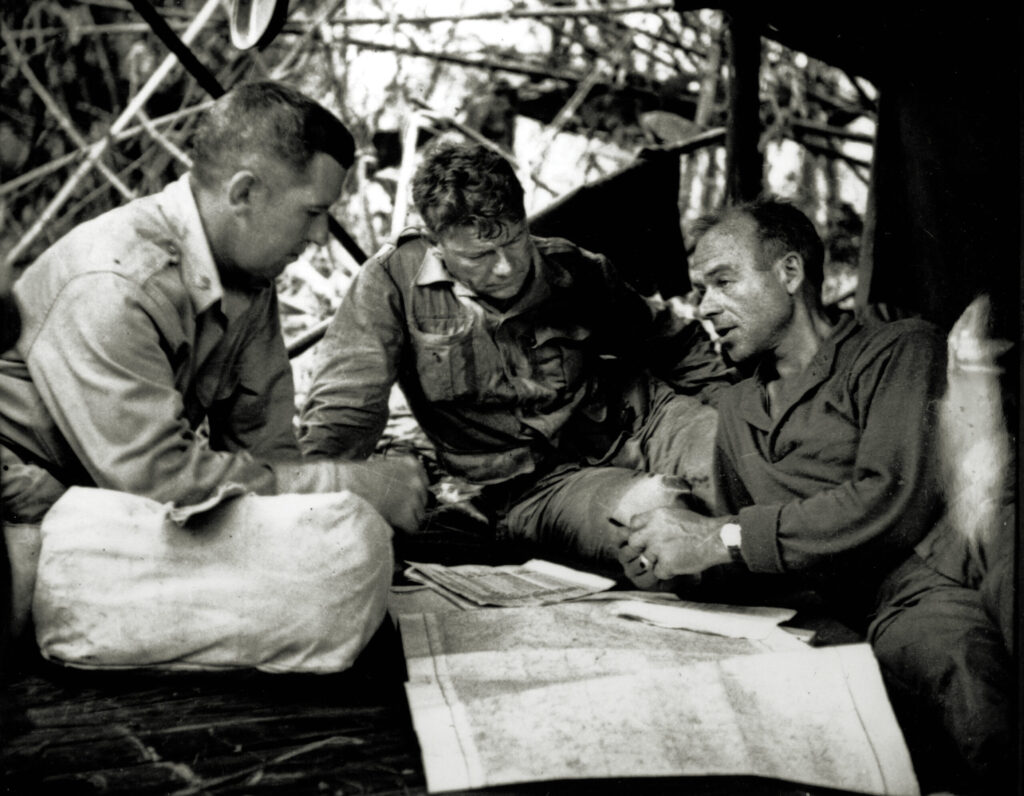
Stilwell had other ideas. He saw an opportunity to capture the airfield at Myitkyina from the Japanese. This would deny their fighter planes a base from which to attack American cargo aircraft flying over the Himalayas “Hump” to resupply China from India. It would have to be a surprise attack if it were to succeed. He ordered Hunter to lead his men on a 70-mile march up and through the 6,100-ft Naura Myket Pass, which was unguarded by the Japanese because they considered it impassable.
Hunter set out at the head of the 6000-strong Myitkyina Task Force (which also comprised two Chinese infantry regiments) on April 28. “Raining,” wrote Staff Sgt. James McGuire in his diary. “6:30am started hiking, went up 2600 ft, really a tough climb. We have 6000 ft mt to go over and it’s really raining and muddy. Bivouacked at village, water scarce. The path is a 20% incline.” That first day set the pattern for what radioman Bernard Martin described as “a trail of sadness.” It took the Marauders and their Chinese allies nearly three weeks to reach the airstrip at Myitkyina during which time they lost men to combat, disease and exhaustion.
On the evening of May 16, Hunter ordered Wilson’s I&R platoon to recce the airfield. Wilson was too sick with amoebic dysentery to lead the mission so Sgt. Clarence Branscomb selected two men and they set out for the airfield. The intelligence they brought back was described by Hunter as “remarkable” and the next morning he launched a successful assault on Myitkyina airfield.
Broken Promises
Prime Minister Winston Churchill called the capture of Myitkyina “a brilliant feat of arms,” and Mountbatten, Supreme Allied Commander, issued an Order of the Day addressed to Stilwell in which he declared the seizure “a most outstanding success…the crossing of the 6,100-foot Naura Myket Pass is a feat which will live in military history. Please convey my personal congratulations and thanks to all ranks.”
But Stilwell didn’t. Nor did he keep his promise that the Marauders would be evacuated as soon as the airstrip had been captured. Bitterness grew among the Americans, as did the casualty list as more Marauders succumbed to sickness. When they were finally relieved on Aug. 3, few remained of the 2,600 who had marched into Burma six months earlier: 93 had been killed in combat, 30 had died of disease and 301 were wounded or missing. An additional 1,970 Marauders had been hospitalized with sickness. It was claimed only two men from the original 3,000 volunteers went through the whole Burmese campaign untouched by sickness. Master Sgt. Joe Doyer was one and Charles Hunter the other.
Hunter had objected to Stilwell about the broken promises and their general mistreatment—criticism that ultimately harmed his career. He died in 1978 in Cheyenne, Wyoming, largely overlooked by the American public compared to Frank Merrill, whose name is forever associated with the Marauders. Only the men themselves knew the truth. “He got the credit for the thing, got his name in it, but he never did anything,” said Clarence Branscomb of Merrill in 2013. “Hunter was doing the job at Mitch [Myitkyina] that Merrill should have been doing.”
Wilson was more charitable toward Merrill, but shared Branscomb’s view of Hunter. “An excellent tactician, an absolutely super troop leader,” he reflected. “A better name for the outfit would probably have been Hunter’s Harbingers or Hunter’s Hawks, or something like that rather than Merrill’s Marauders. But as you know, history doesn’t always work like that.”

